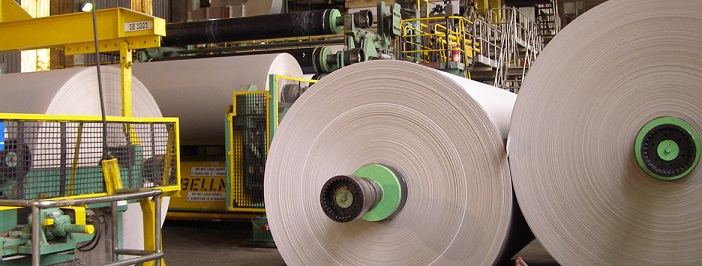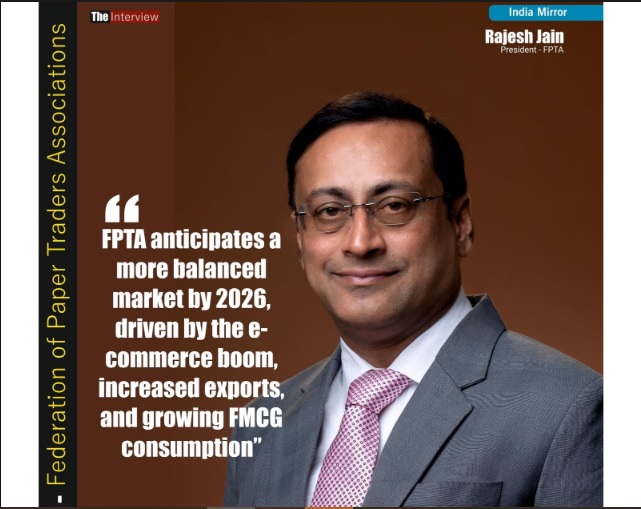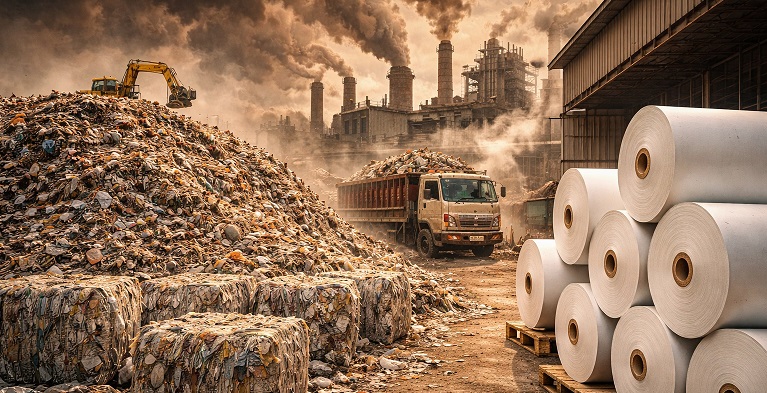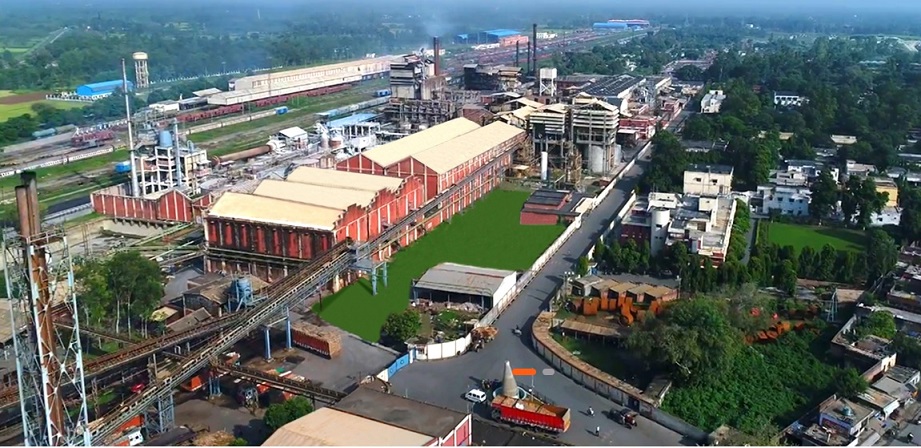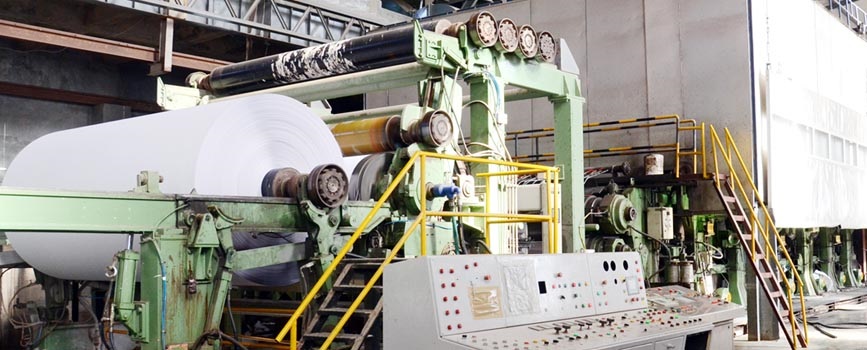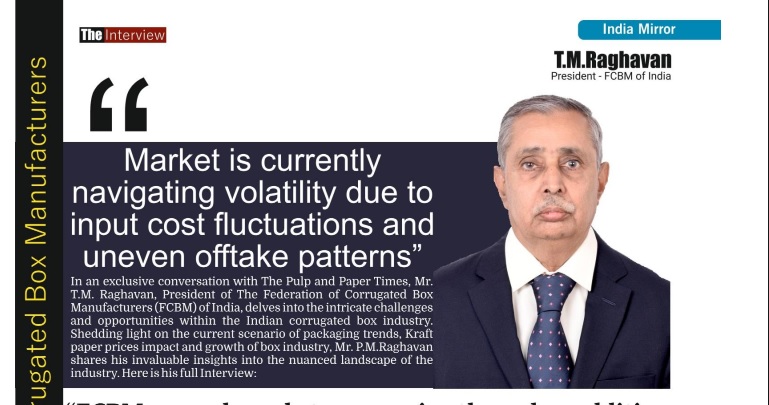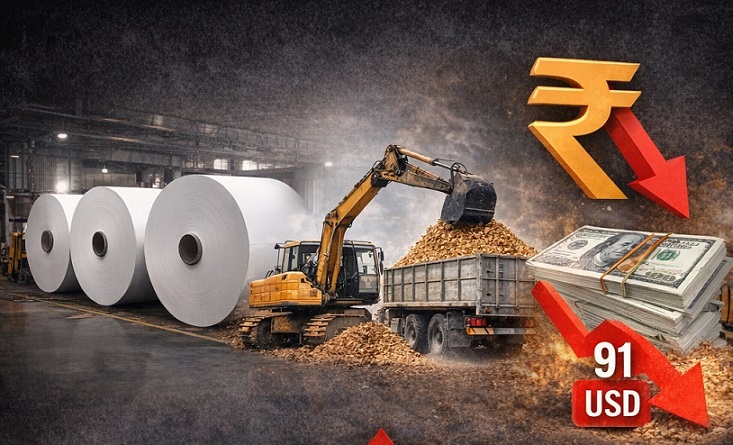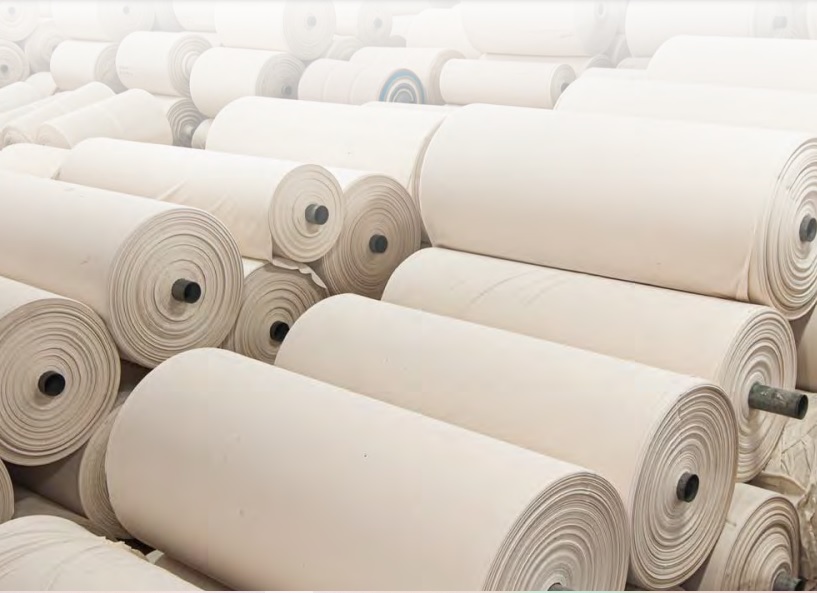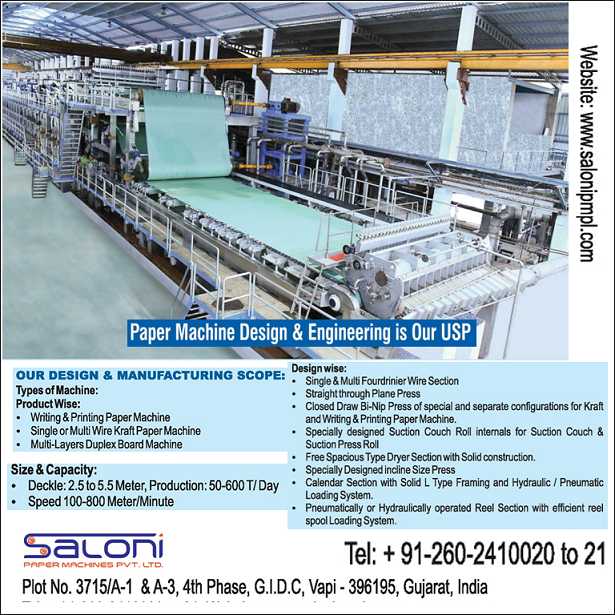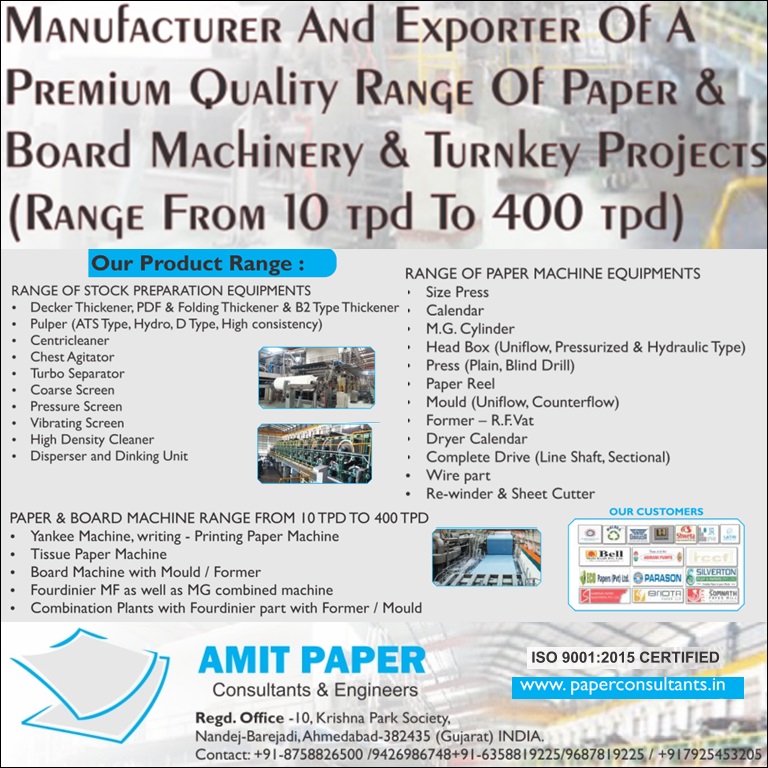Harnessing AI tools and innovation key for accelerating Water Efficiency improvements in the Indian Pulp and Paper industry
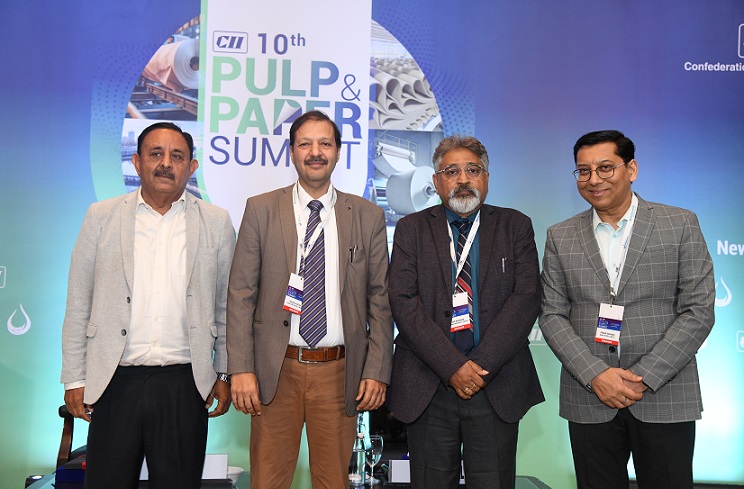
Harnessing AI tools and innovation key for accelerating Water Efficiency improvements in the Indian Pulp and Paper industry
- The need to achieve below 10 m³/tonne through innovation and circular water use
The Pulp and Paper Times
At a high-level industry dialogue at the opening session of CII 10th Pulp & Paper Summit 2025, on the theme, " Towards Future Ready Enterprises: Advancing Innovative Water Solutions” organised by Confederation of Indian Industry at New Delhi today, leaders from India’s Pulp and Paper (P&P) sector underscored the need for transforming water management practices in the light of growing water stress and stringent environmental regulations.
Mr Pawan Agarwal, President, Indian Paper Manufacturers Association (IPMA) and Managing Director, Naini Papers Limited, welcoming the delegates, highlighted the sector’s significant strides in improving operational efficiency. He noted that the industry has reduced specific freshwater consumption—from 200 m³ per tonne of paper three decades ago to less than 30 m³ per tonne in leading mills. He emphasized that the ultimate goal must be to reach single-digit specific water consumption.
Mr Agarwal advocated for a comprehensive, loop-closing strategy rather than relying solely on end-of-pipe fixes. He recommended a mixed approach encompassing process redesign and equipment upgrades to minimize freshwater inflow. Treating backwater as a valuable resource and recycling it within appropriate subprocesses was emphasized. He further urged deployment of advanced recovery technologies such as membrane systems in a cost-effective manner and promoted the use of artificial intelligence and digital tools to monitor water footprint, analyze effluent quality in real-time, and optimize reuse without compromising product quality.
Mr Sidhartha Mohanty, Divisional Head – Manufacturing & Projects, ITC Limited PSPD, emphasized the need to intensify rainwater harvesting, vegetation enhancement, and afforestation, while proposing agroforestry and waste-to-resource models as scalable, water-positive interventions. Citing ITC's reduction in water use from 222 m³/tonne in 1989 to 40 m³/tonne today, he credited the progress to technological upgradation, low-water equipment, and sustainable process design. Mr Mohanty encouraged reimagining wastewater treatment not as a cost center but as a revenue opportunity—enabling resource recovery such as biogas and chemicals. He also advocated for AI-driven water management and industry-wide water stewardship, urging proactive alignment with emerging regulations to ensure long-term water security through innovation, responsibility, and awareness.
Mr. Pavan Khaitan, President, Indian Pulp and Paper Technical Association (IPPTA) and Vice Chairman & Managing Director, Kuantum Papers Ltd, addressing the gathering underscored the existential nature of India’s water crisis. He urged transformative water stewardship across the P&P industry, especially in water-stressed regions. While significant progress has brought average consumption down from over 200 m³/tonne to under 50 m³/tonne, he emphasized the need to achieve below 10 m³/tonne through innovation and circular water use. He highlighted the role of smart water systems powered by AI and machine learning to optimize chemical use, reduce energy and water costs, and enhance compliance.
Technologies such as advanced oxidation, reverse osmosis, and energy recovery systems, he said, can simultaneously boost efficiency and environmental resilience. Concluding with a Gandhian ethos, Mr. Khaitan encouraged industry to regard water not merely as a cost, but as a strategic asset vital to sustainability and investor confidence.
Mr Amit Verma, Director, NITI Aayog, in his special address emphasized the strategic urgency of water efficiency in the pulp and paper sector, aligning it with national priorities of sustainability and industrial competitiveness. With tightening domestic and global regulations around water, waste, and emissions, especially in sectors dependent on recycled inputs, he urged mills to embrace digital optimization through AI, IoT, and sensor-based systems—not just for compliance, but for competitive advantage.
Dr Bhushan Lamsoge, Director, Central Ground Water Authority (CGWA), underlined the regulatory and sustainability imperatives concerning groundwater abstraction in the P&P industry. Addressing concerns around NoC (No Objection Certificate) applications, he mentioned that groundwater pricing remains highly subsidized in the country and emphasized on the importance of accurate return flow data and impact assessments.
He called on the industry to adopt recycling and closed-loop systems, and advanced effluent treatment technologies such as Membrane Bioreactors (MBR) and Reverse Osmosis (RO). He stressed the role of automation, AI, and IoT for efficiency improvement, along with rainwater harvesting and aquifer recharge.
Ms Shilpa Nischal Principal Counsellor, CII Water Institute, emphasised the need for collective action, innovative thinking, and sector-wide collaboration to drive meaningful change in water stewardship. Concluding the session, she thanked the speakers and participants for their commitment to advancing a resilient, water-wise future for the pulp and paper industry.
Web Title: Harnessing AI tools and innovation key for accelerating Water Efficiency improvements in the Indian Pulp and Paper industry




 Join WhatsApp Group
Join WhatsApp Group Join Telegram Channel
Join Telegram Channel Join YouTube Channel
Join YouTube Channel Join Job Channel (View | Submit Jobs)
Join Job Channel (View | Submit Jobs) Join Buy Sell Channel (Free to Submit)
Join Buy Sell Channel (Free to Submit) Paper News Headlines Channel (Free to read)
Paper News Headlines Channel (Free to read)




